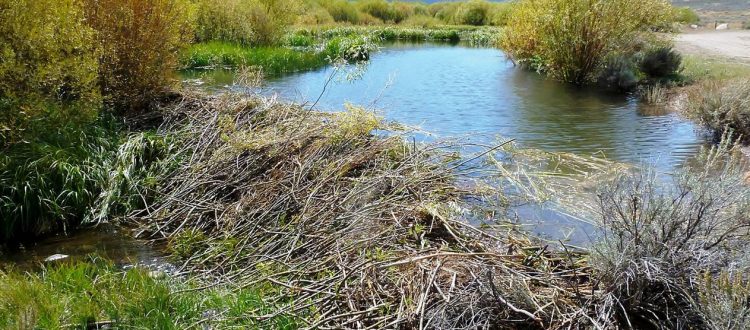Picture Perfect Streams?
by Patricia Marshall
Picture Perfect Streams
The stream sparkles under the blue, New Mexico sky. You can get right down to the water’s edge on the gravel that lines the banks, maybe for a swim out to the sandbar in the middle. Picturesque and appealing, the stretch of the Gila River shown in this postcard seems to represent the best of the western landscape.
Not so, says Suzanne Fouty, a hydrologist with the U.S. Forest Service and a Ph.D. candidate at the University of Oregon. Very early western explorers and trappers describe streams dense with vegetation and flooded meadows that made passage difficult. Massive beaver trapping in the first part of the nineteenth century followed by the arrival of settlers who introduced logging and livestock grazing drastically altered western waterways. The stream characteristics we take for granted are the result of changes that took place then and are continuing 200 years later.
“We are all so conditioned by what streams are supposed to look like,” says Fouty. “You have seen postcards; you’ve seen movies. Everything you’ve ever seen in a river is a river that has been so highly damaged and that’s what we are using for our model.”
Fouty started to realize the magnitude of the change when she was living in Montana in 1993, working for the Forest Service by day and doing stream surveys in her spare time. She was supposed to survey in a cattle exclosure, a stream area free of cattle and elk grazing, but when she got there, she found it inundated with beaver dams and pools. Thinking they would throw her study off, she gave up for the year.
The next year, she visited a farm in Idaho that also contained an exclosure. “Outside the exclosure was grass that was a half-inch tall at most, raw banks, a piddly amount of water, but inside was [an] incredibly lush, stunningly beautiful riparian area. It was at that moment that I thought, ‘Oh my God, this is how streams in the West, in these smaller drainages, are supposed to look.'”
A typical western stream reflects years of grazing and bank trampling. When cattle strip the vegetation, no roots are left to hold the fine soil together. Irreplaceable stream sediment washes away, and compacted soil makes it difficult for new vegetation to take hold. As a result, streambeds become wider and shallower, moving water more quickly through the system and preventing flooding of the valley floor.
This may be seen as a benefit, especially if the water is bypassing your home, but water racing through a straight channel erodes banks and can inundate downstream residents. It also moves the water out of the system, decreasing drought resistance. A stream with a deep, narrow channel will occasionally flood the valley floor, saturating the ground and storing water like a giant savings account. Banking water in the system creates a reserve that the river can tap during dry periods, providing a better chance of survival for vegetation, fish and wildlife.
Beaver Damming
Lack of mature vegetation for dam building also discourages beavers. Though the animals are often considered a nuisance, their dams provide the same benefits as flooding.
Fouty recognizes that human conflicts will prohibit beaver populations from becoming as large as they were 200 years ago, but she believes that if beavers are encouraged in upstream nonresidential areas and if grazing controls are enacted, a postcard fifty years from now will look quite different. She sees a meandering stream in the valley floor, diverse riparian vegetation and streamside communities from meadow to marsh, a healthy, sustainable system that provides ecological stability.
This article appeared in Forest Magazine, Special Issue 2003, and is reprinted with the permission of that magazine and the author.

